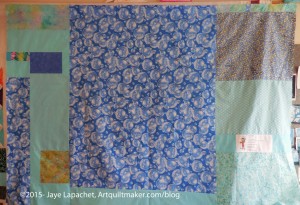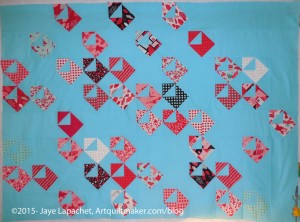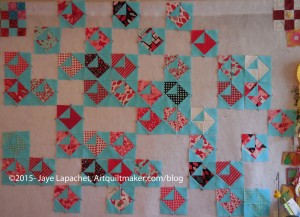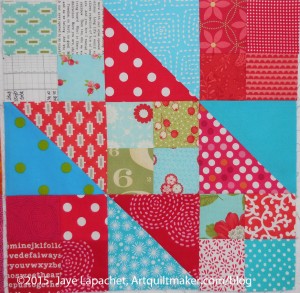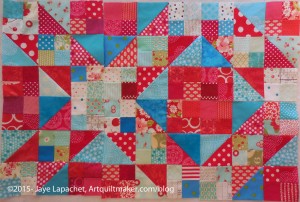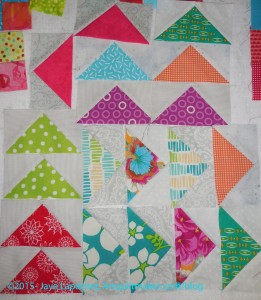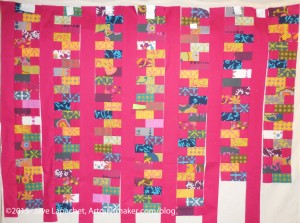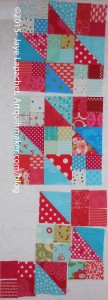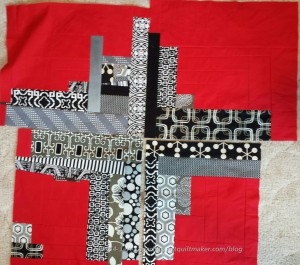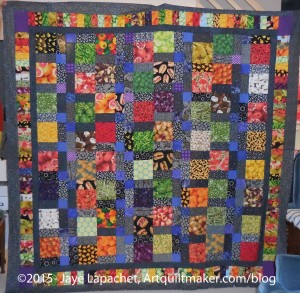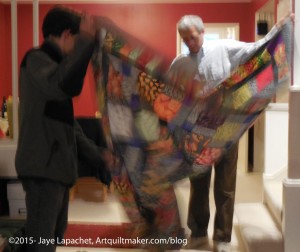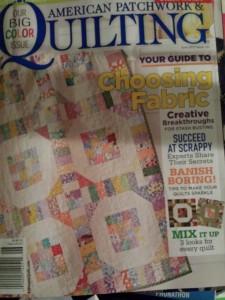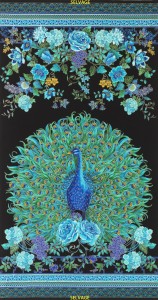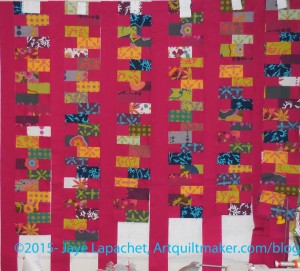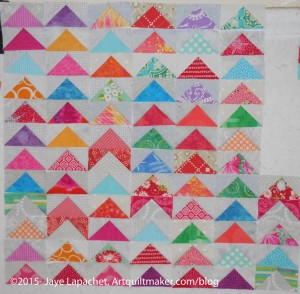Yes, I finished piecing the back and making the binding over the weekend. I have three projects to take to the quilter today and I am very pleased about that. I am very pleased to get these projects off my plate for awhile and can move ahead to something else.
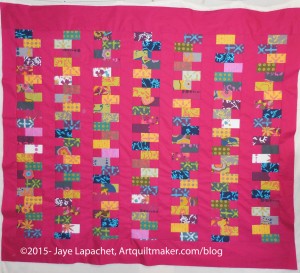
I had thought to put a gold border in between the Sangria borders, but once I put the Sangria on the top and bottom, I thought the top looked finished and I was happy enough to leave it as is.
The ‘coins’ float, which is a little odd, but I kind of like the look.
I had a goal for Saturday to get the whole piece ready for the quilter. As I mentioned, I am taking two projects over and to take a third would be an added bonus.
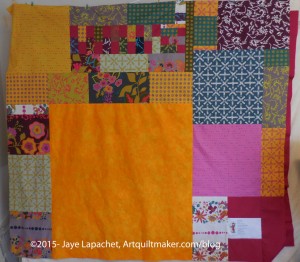
I was able to achieve my goal in the nick of time. We had plans with friends on Saturday evening so I only had about 3 hours to get the piece ready. The back, as usual took me a long time, even though I used a large piece and I used up some of the leftover fat quarters.
Now I can take the third, so BONUS!

